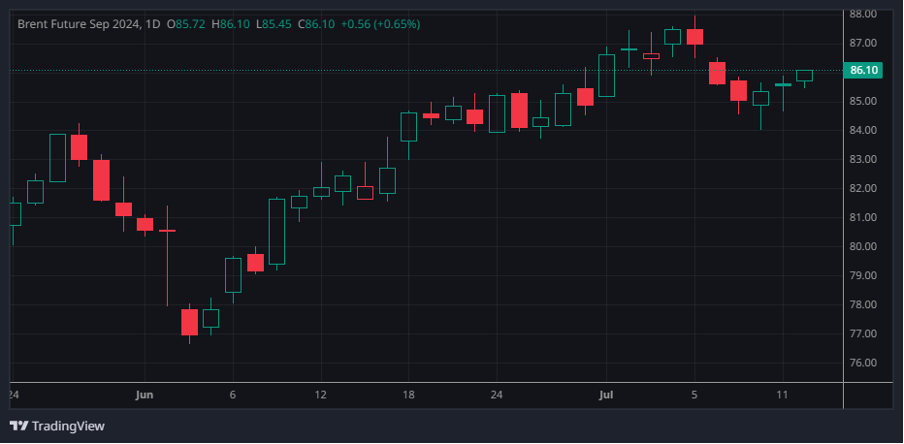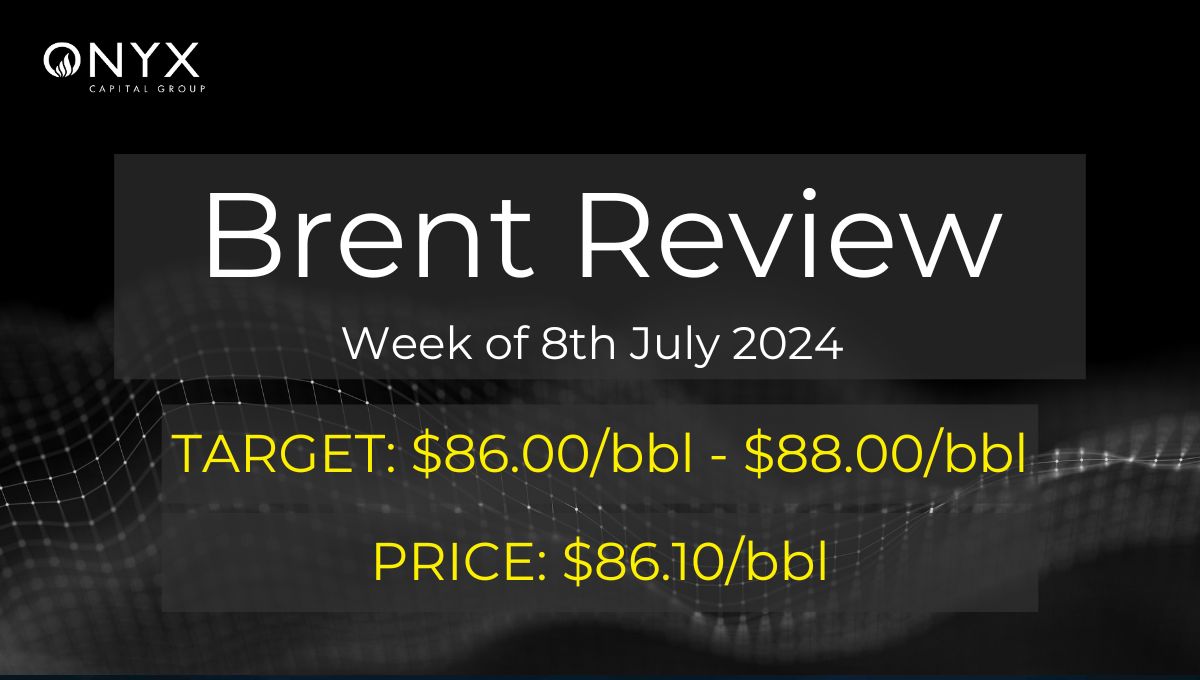TARGET: $86.00/bbl – $88.00/bbl
PRICE: $86.10/bbl
Party in the USA?
Brent appears confident to break a four-time streak of ending the week stronger than where it began, amid a fall from last week’s rally to a four-month high. Despite this, Brent flat price for the September tenor recovered to $86.20/bbl at 10:00 BST (time of writing), well within our forecast of $86-88/bbl. The initial fall and subsequent retracement higher this week was driven by three key factors, which we will elucidate further:
– Reduced weather risk to supply,
– Bullish EIA stats in crude oil and gasoline,
– Positive risk sentiment emanating from US CPI data

We began the week with alarm bells, as Hurricane Beryl shut down oil infrastructure in the US. Having entered the USGC as a Category 2 hurricane, Beryl closed down major oil ports around Corpus Christi, Galveston, and Houston. However, by Tuesday, Beryl lost its strength very quickly upon making landfall and was downgraded to post-tropical cyclone status. Ports Corpus Christi and Freeport reopened on Monday, while authorities for Port Houston reported that they would reopen their terminals on Wednesday. This development brought about a rapidly easing fundamental narrative that led to a sell-off in the benchmark crude oil futures, which dipped to an intraday low of $84/bbl on Wednesday.
However, on Wednesday, the EIA announced US oil inventories for the week ending 05 July at 15:30 BST. The stats announcement unveiled a 3.443mb draw in US crude oil inventories against median estimates of a 1mb build. In addition, Cushing inventories saw a 700kb draw and gasoline stocks in the country witnessed a 2mb draw, the latter sparking hopes for a rebound in summer demand, which appears uncharacteristically low this year. While distillate fuel oil saw a higher-than-expected build of 4.884mb, refinery utilisation increased by 1.9% this week (versus an anticipated decline) to 95.4%, highlighting a rise in demand for crude. The September Brent futures contract rallied to $85.50/bbl by 17:00 BST on Wednesday.
A final boost for oil came from Thursday’s US CPI data for June, which, in line with what we stated in Monday’s forecast, came in lower than expected. The data showed US consumer prices declining for the first time in four years, with a CPI reading of -0.1% m/m (exp: +0.1% m/m) and +3% y/y (exp: +3.1% y/y). This cooling of inflation triggered hopes for a rate cut by the US Fed, with the Sep OIS now pricing exactly 25bps while the year-end OIS now prices 60 bps in cuts and is trending towards 75. While the usual negative correlation between the USD and oil prices has not been as robust recently, it does not hurt sentiment in oil that the DXY plummeted to 104.10 at 14:15 BST on Thursday, although it has since risen to 104.35.
A final note on sentiment
OPEC and the IEA released their monthly outlooks on oil this week. OPEC remains the optimist, sticking to its 2024 and 2025 oil demand view amid a strong travel season. The forecast states that world oil demand will rise by 2.25mb/d y/y in 2024 and 1.85mb/d y/y in 2025. The IEA, by contrast, predicts a decline in world oil demand growth in its July monthly report, anticipating that an increase in global oil demand will average just under 1mb/d, at 970kb/d y/y in 2024 and 980kb/d y/y in 2025 amid weaker economic growth, improvements in efficiency and increased usage of EVs. It will be interesting to see how the market picks up this divergence in the coming weeks. Onyx’s CTA model shows that speculative net length approached a high of 23.55mb in the week ending 05 July and is now moving lower, suggesting a correction from a possible oversaturation. However, if sentiment continues to be boosted by events such as today’s US PPI data or supportive developments in summer demand, we may continue to see prices climb.

